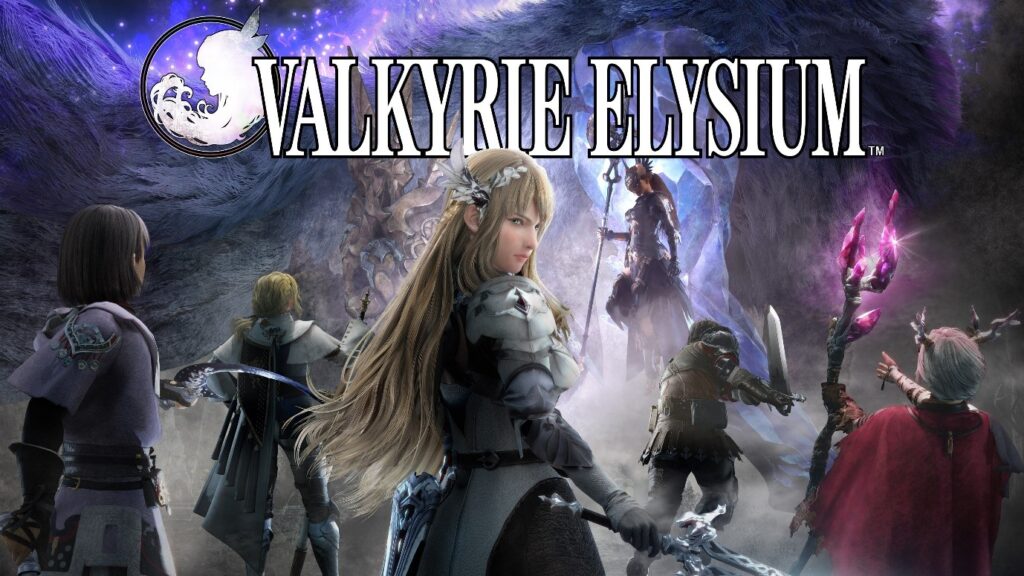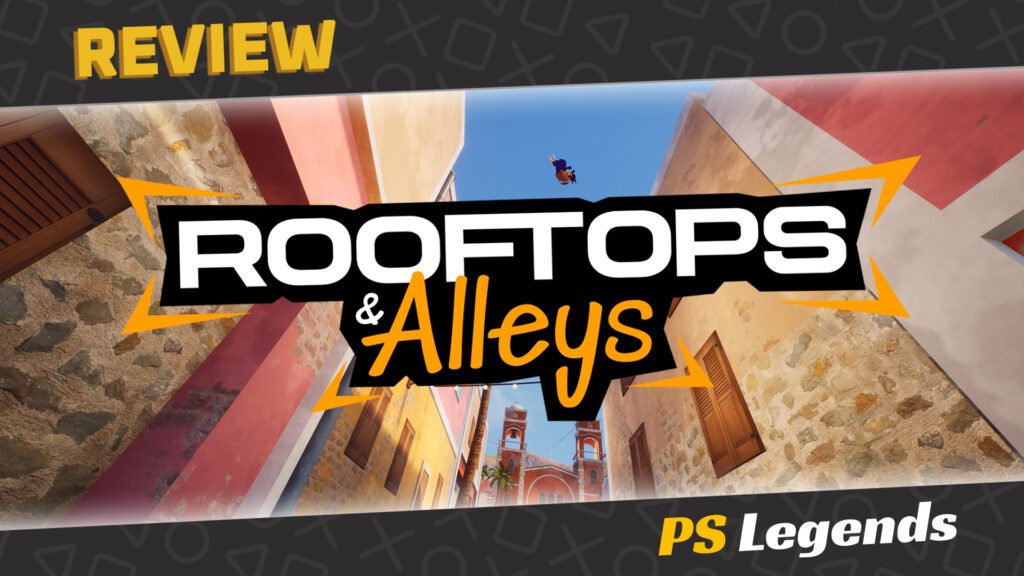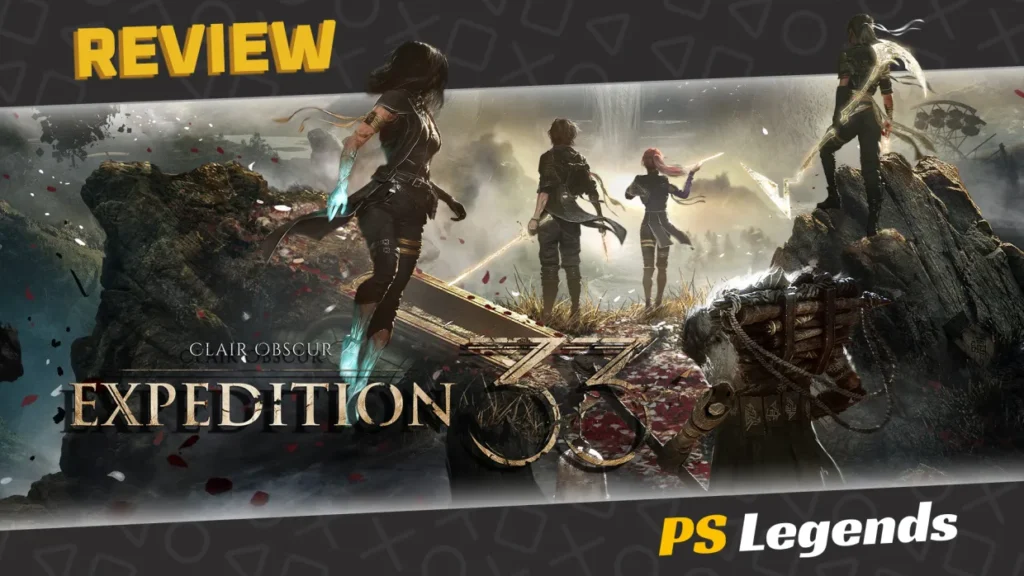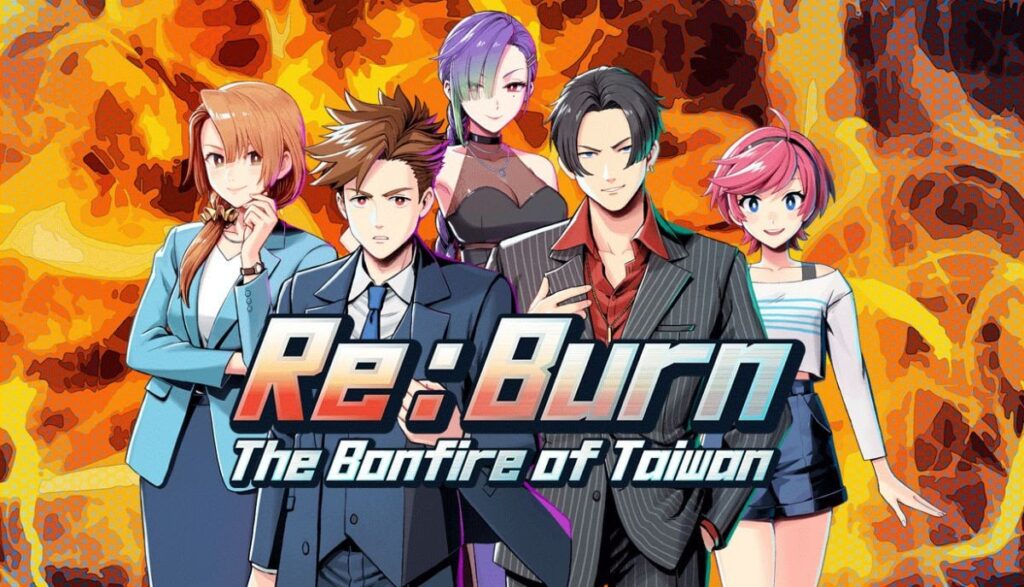Here’s something I haven’t told you before; I’m actually something of a historian, with my speciality being ancient history and mythology. It’s kinda my jam. I adore the classic tales, the iconic characters, and the twist of order versus chaos rather than textbook good versus evil.
There are different interpretations of these tales, which is to be expected after thousands of years of retellings. Seeing these different interpretations explored and expanded in modern variants can be interesting.
What I don’t enjoy is when modern storytelling takes liberties with the source material and reinvents perfectly good characters. The God of War series is a prime example of this. Fun games, yes, but the needlessly bastardised storylines had me rolling my eyes in disappointment. Will Valkyrie Elysium follow this trend?
On This Page
Introduction
Valkyrie Elysium is a classic action-adventure spin-off of the Valkyrie Profile series. I’m hesitant to agree with the genre of action-RPG since it steps away from traditional party-based gameplay and experience accrual. Unlike the other games in the series, Valkyrie Elysium is developed by Soleil, known for the development of online competitive multiplayer game Ninjala, and published by Square-Enix.
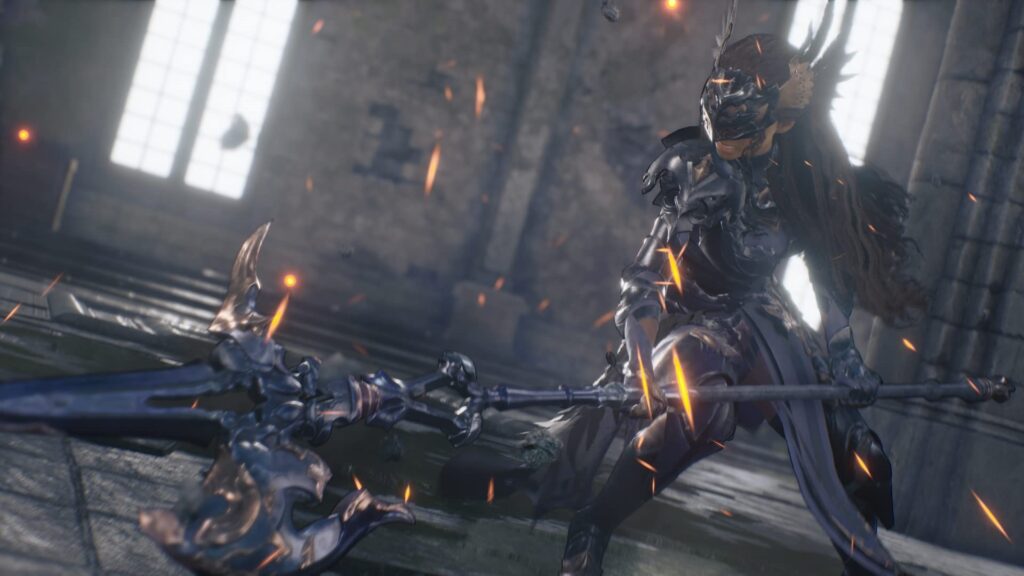
If you’ve never heard of or played the original Valkyrie Profile, there is a solid fan-base there, though it’s yet another Square-Enix classic which Europeans (including myself) weren’t deserving of the first time around. Nevertheless, the original PS One RPG has a passionate North American fan-base.
Valkyrie Elysium sets out to be a very different kind of game from what came before. It still draws inspiration from elements that made Valkyrie Profile popular, but the overall experience is something else entirely. It also takes inspiration from more modern genres, particularly Souls-likes, producing a standalone adventure. No, you won’t need to play the originals to make sense of this one, however, it is technically a canon sequel.
Story
Hopefully, you already know that Ragnarök is the epic climax to the Norse mythology saga. It tells of the end of the world(s), as the dominant god-tier Aesir clash with the monstrous armies of Niflheim, Muspelheim, and Helheim following the decimation of Midgard (our Earth) by the Fimbulvetr (believed to be the last ice age).

There would be no winners in this battle, and the final showdown in the halls of Valhalla would see Odin, the high king of the Aesir, devoured by the giant Fenris Wolf, also known as Fenrir. None would survive, though it is said that before his death, Odin would use the last of his power to revive Midgard, along with a handful of youths who fell too soon.
Where the first game ran alongside the events of Ragnarök, Valkyrie Elysium spans only a small segment of the story’s final act. After his battle with Fenrir, the mortally wounded Odin hopes to cheat fate by using purified souls from Midgard to heal himself.
However, in his current state and with Fenrir still hunting him, Odin is in no position to travel to Midgard. The game sadly paints the mighty Odin as somewhat frail and cowardly, rather than the iconic warrior of legend we know and love.
The game follows a new Valkyrie who remains nameless throughout most of the adventure. Created by Odin, she is sent to find and purify souls on Midgard in order to save both ‘All-Father’ Odin and Midgard from the monsters corrupting these souls, the Naglfar.
Valkyrie is not alone in this mission, using the Einherjar, resurrected warriors to fight alongside her. Each level gives a little bit of background and story to each of the Einherjar that you recruit over the course of the game. It’s also refreshing to finally learn the correct pronunciation of ‘Einherjar’ too.
In older games, you had a much larger cast of Einherjar to work with and some had more prominent storylines than others, whereas in Valkyrie Elysium, you only have the four to work with during the whole game, with each possessing a different elemental attribute.
One would assume that with only the four Einherjar, this should mean a lot more screen time for each of them, yet it never really feels like any of them get the proper fleshing out of their characters. Even upon completion of the game, it’s really hard to tell how, when, or why each of them died. There are sub-quests for each then that you can follow that add a little more back-story, but it still just doesn’t really ever feel that thorough.
Valkyrie, however, does grow as a character throughout the story. Initially cold, militant, even robotic, Valkyrie becomes more human and compassionate with each new Einherjar she recruits, eventually coming to question her actions and her role in the future of the world. This is also assisted by the intervention of a rebellious, second Valkyrie named Hilde.
The story is arguably the weakest component of the game. It’s certainly not a bad effort, but there simply isn’t enough plot to spread around. There’s a brief beginning and a decent ending, but very little in the middle to keep you enthralled.
Gameplay
Valkyrie Elysium is an action game focused on the combat side of genre rather than the RPG side. The overall flow of the game is pretty simple. There’s an opening tutorial that also sets up the basis of the story, and then you have the hub area, Valhalla, where you’ll select which quests you want to take.
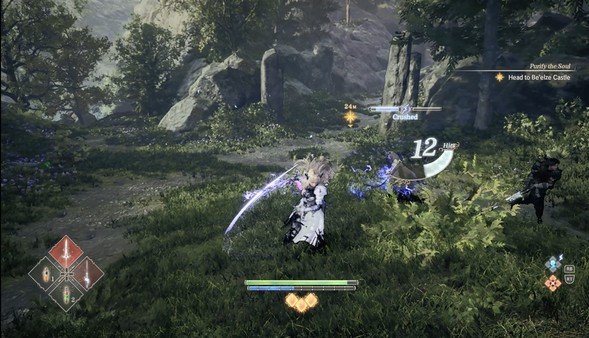
Main story quests take around an hour to complete and move the main plot forward, whereas sub-quests take between 5 and 15 minutes to complete and are usually just a straightforward ‘destroy a bunch of enemies’ mission, taking place in the same areas you’ve already explored during main chapter quests, acting as a source of additional interactions, resources, and new weapons.
You start with one weapon that has a specific play-style, and you’ll unlock more weapons as you play through the game. Each weapon handles differently from the last, though the control inputs themselves remain the same. Keep pressing the light and heavy attack buttons to chain a combo, but there are fancier things you can do and learn over time as you unlock higher levels of each weapon.
I’m particularly fond of tapping the heavy attack button right after a complete light attack combo with the starting sword which causes Valkyrie to elegantly twirl through the air, delivering one last devastating slash. Later, you can unlock a counterattack move which works similarly to a ‘parry’, and let’s Valkyrie sprout beautiful wings of light before dashing around the screen, slashing enemies to pieces.
The mechanic that makes Valkyrie Elysium stand out in the action genre has certainly got to be the addition of Einherjar. The Einherjar are your summonable soldiers which you’ll recruit over the course of the story. You can summon up to two Einherjar out of a possible four at any one time, forming a fun little temporary attack party.
Summoning a specific character can be incredibly useful for taking down certain kinds of enemies since each Einherjar attacks using a specific element. The active element also passes to Valkyrie’s attacks too, allowing you to deliver critical damage on two fronts. This is essential for bosses with large health bars. There are also various abilities you can unlock later on which let you automatically summon Einherjar when certain conditions are met.
You can level-up Valkyrie’s stats and skills by investing resources that you get from enemy drops. Resources are plentiful so you can afford to play around with upgrade branches at your leisure. The only thing that keeps you progressing is needing a new kind of resource that doesn’t show up until later chapters; a mechanic included to stop you getting too strong too soon.
Graphics/Sound
The art direction of the game is stunning. The character designs look great, even in the middle of anarchic combat. Moves flow with generous spectacle when Nordic combat is usually full of brute force and ignorance. The frame rate is consistently smooth throughout, too. Environments are gloriously detailed, especially Valhalla itself, which feels alive and maintained, even when abandoned.
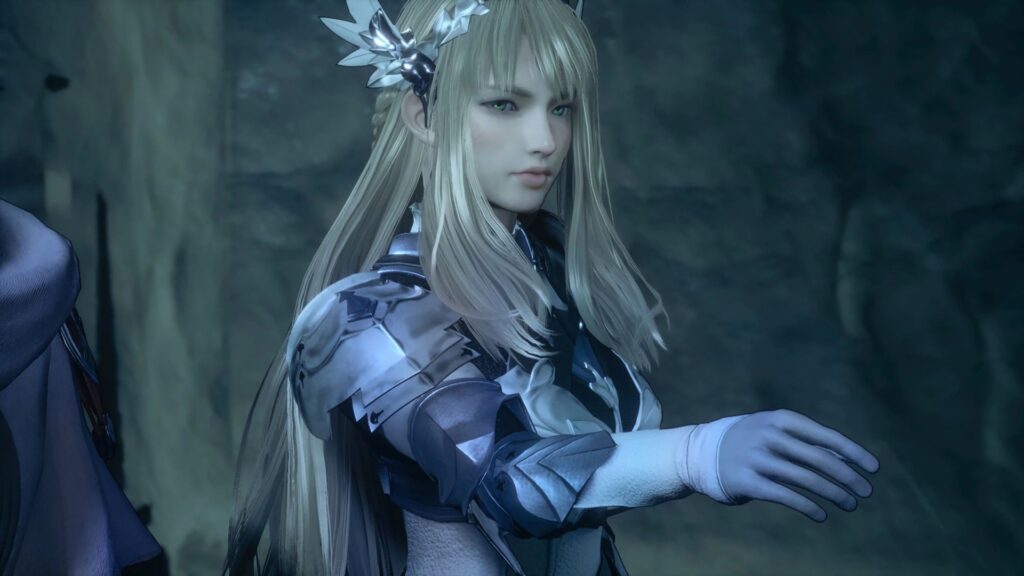
There’s a unique aspect to the art. Zoom in close enough to any character or object and you’ll notice everything has a fine, black outline, almost like an image in a storybook, drawn with a marker pen. It’s an interesting touch. You can tell a great deal of attention was given to getting Valkyrie’s appearance absolutely right too. Her armour is functional yet not overly restrictive, allowing fast and free moves. As a warrior goddess, it’s obvious that she’d be undeniably beautiful, and of course she is.
Unfortunately, the camera can be a little erratic at times, usually when you’re battling in an enclosed space. When backed into a corner or against a wall, the camera will frequently zoom in and often through Valkyrie until you can move into a more open area. In these situations, it makes more sense for the camera to zoom out instead, up and over the offending wall. Thankfully, you can usually fight yourself out of a corner pretty easily.
The game features music by Motoi Sakuraba who does a superb job. The orchestral soundtrack always suits the mood, with tracks switching on the fly to accompany the on-screen drama. Sleepy ghost towns have an eerie ambiance, Valhalla sounds grand and angelic, and combat music is fast and upbeat. The voice acting is also excellent. Whilst Scandinavian accents would be more racially accurate, Holli Dempsey’s sexy British accent for Valkyrie didn’t disappoint.
Replayability
With only nine stages, each around an hour long, plus scenes back at Valhalla and upgrading, you can expect a playthrough to last around twelve hours. Working your way through side-quests and more upgrading can easily bring you to the twenty-hour mark, but there’s still plenty more to keep completionists busy.
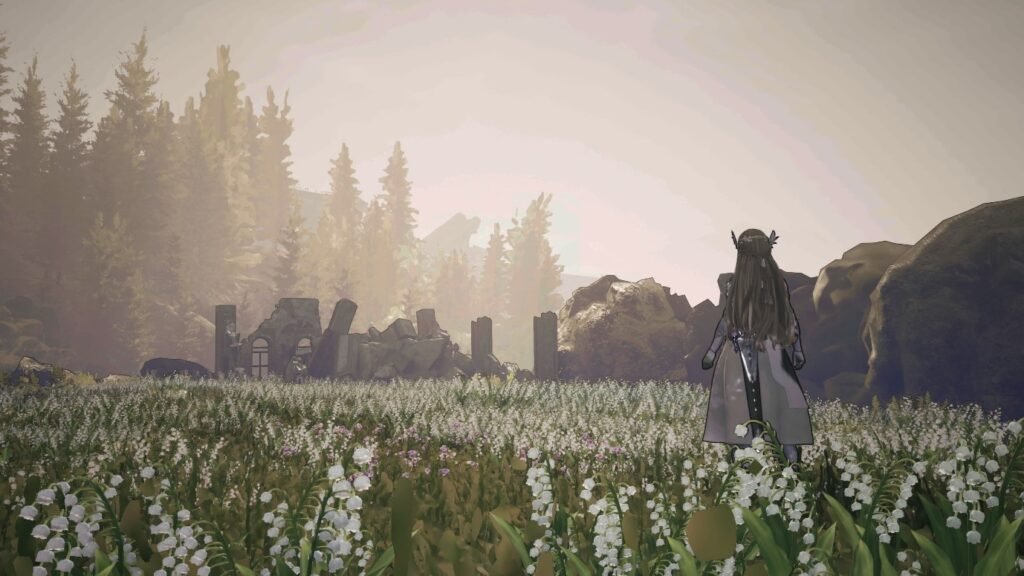
Making sure to double-check every nook and cranny to find these little collectible flowers that flesh out the game’s back-story a little, and finding ghostly apparitions which unlock a few extra side-quests will require some thorough hunting, but they do bring in extra rewards in the form of more upgrade gems and trophies. You’ll need to finish absolutely everything for the platinum trophy. A guide is a must.
What the game doesn’t tell you (and is only hinted at in the trophy descriptions) is the game actually has four possible endings, though the requirements to unlock them all aren’t well known. Again, a guide will clear it up for you, but those just playing through once and hoping for a canon ending may end up missing out on everything Valkyrie Elysium has to offer, and that could be avoided by the game offering a bit more clarity.
Conclusion
Sure, Valkyrie Elysium is lacking in places. Even terminology such as the monster ‘Charybdis’ and the title ‘Elysium’ are erroneously placed products of Greek mythology rather than Norse, and the plot as a whole does feel a little disrespectful of the source material. It’s also a shame that the story is spread so incredibly thin. What remains really just does its own thing with the mythology behind it and doesn’t really do so convincingly.
Diehard fans of the original games may end up walking away disappointed because of the drastic changes in presentation and gameplay, but I’m happy to report none of these changes are a bad thing. The combat is fast, fluid and incredibly satisfying, while the visuals are usually stunning throughout, only interrupted when the camera briefly misbehaves, but that’s hardly a game-breaker.
Nevertheless, Valkyrie Elysium is undeniably fun. The flow of combat is a spectacle to behold, and thanks to the variety of accurate difficulty settings available, it’s only ever as challenging as you want it to be. It does its job, unambitious as it may be. Providing you don’t go in expecting Game of the Year, you will still find enough entertainment here to grant it a passing grade.
Joys
- Glorious combat
- Beautiful visuals
- Solid sound and voice acting
Cons
- Very little story to keep you invested
- Dodgy camera
- Lacking in RPG mechanics
